- News
- Reviews
- Bikes
- Components
- Bar tape & grips
- Bottom brackets
- Brake & gear cables
- Brake & STI levers
- Brake pads & spares
- Brakes
- Cassettes & freewheels
- Chains
- Chainsets & chainrings
- Derailleurs - front
- Derailleurs - rear
- Forks
- Gear levers & shifters
- Groupsets
- Handlebars & extensions
- Headsets
- Hubs
- Inner tubes
- Pedals
- Quick releases & skewers
- Saddles
- Seatposts
- Stems
- Wheels
- Tyres
- Tubeless valves
- Accessories
- Accessories - misc
- Computer mounts
- Bags
- Bar ends
- Bike bags & cases
- Bottle cages
- Bottles
- Cameras
- Car racks
- Child seats
- Computers
- Glasses
- GPS units
- Helmets
- Lights - front
- Lights - rear
- Lights - sets
- Locks
- Mirrors
- Mudguards
- Racks
- Pumps & CO2 inflators
- Puncture kits
- Reflectives
- Smart watches
- Stands and racks
- Trailers
- Clothing
- Health, fitness and nutrition
- Tools and workshop
- Miscellaneous
- Buyers Guides
- Features
- Forum
- Recommends
- Podcast
review
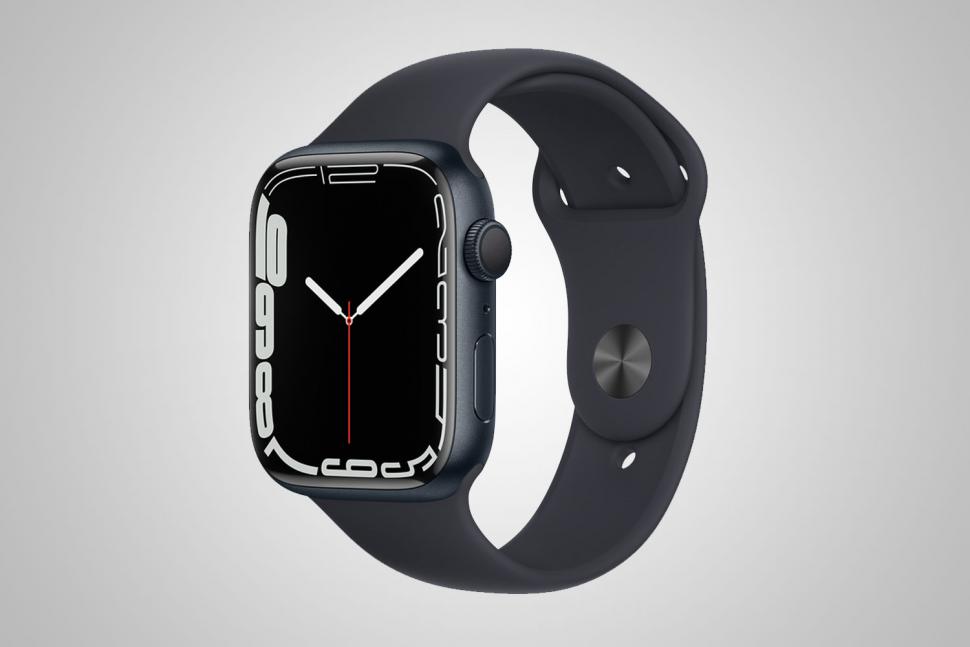 2021 Apple Watch Series 7.jpg
2021 Apple Watch Series 7.jpg£399.00
VERDICT:
Impressive smartwatch, whether you're on the bike or at your desk
Auto-detection of cycling feature works well
Loads of integrations with other apps
Super convenient for multiple uses
Shorter battery life than rivals
Can't connect cycling sensors
Weight:
68g
Contact:
At road.cc every product is thoroughly tested for as long as it takes to get a proper insight into how well it works. Our reviewers are experienced cyclists that we trust to be objective. While we strive to ensure that opinions expressed are backed up by facts, reviews are by their nature an informed opinion, not a definitive verdict. We don't intentionally try to break anything (except locks) but we do try to look for weak points in any design. The overall score is not just an average of the other scores: it reflects both a product's function and value – with value determined by how a product compares with items of similar spec, quality, and price.
What the road.cc scores meanGood scores are more common than bad, because fortunately good products are more common than bad.
- Exceptional
- Excellent
- Very Good
- Good
- Quite good
- Average
- Not so good
- Poor
- Bad
- Appalling
The Apple Watch Series 7 is the first that Apple seems to have created with cycling in mind, with some really useful features added that make it easier to use when riding than previous versions. The larger screen and increased sensor sensitivity also mean it records and delivers more useful information.
I have had an Apple Watch for the last three years and alongside my phone it's the only piece of tech that passes the 'turnaround test' for a bike ride (where you would turn round at the end of your road if you forgot it).
In older versions of the watch, cycling was supported but it never really felt like it was one of its main activities, as the watch didn't automatically recognise you doing it. However, this latest version puts a specific focus on cycling features.
Setup and operation
The Apple Watch, unsurprisingly, only works with iPhones, and because of the close integration of everything Apple does, the setup process is pretty much as seamless as you can get. All you do is hold the watch near your phone, wait until what looks like a cloud of moving dots appears on the watch, then use your phone's camera to scan it.
Once there, you just need to enter some basic information, wait for the phone and watch to do the initial setup, and you're good to go. For first time setups this takes less than three minutes; transferring everything from my old Apple Watch took around 10 minutes.
Operation of the phone is generally done through the touchscreen face, whether using simplified versions of your phone's apps or controlling native watch applications.
You can also set multiple watch faces to choose how it looks and what it displays depending on how you want to use it; day-to-day I will set a face that allows me to see key information, but if I'm in the office I have pictures of my family.
You can control what appears on the watch from the watch app on the iPhone, choosing from various faces, apps, and other customisations. This is simple to do and works seamlessly with the watch, with the only slight lag being when you upload multiple images to the watch.
Aside from the touchscreen elements, the watch has two other main control elements: a button on the side that can bring up either contactless payments or recently used apps, and turn the watch off; and the 'Digital Crown' that looks like a watch winder but when pressed opens the screen from where you can open any app available on the watch or rotate it to zoom or scroll on different apps.
As you might expect from Apple, the watch operates seamlessly. I have used dozens of smartwatches over the years and when it comes to the user interface, nothing else has come close.
Cycling auto detection
First off, Apple has looked at the algorithms used in the various sensors in the watch to better predict whether you are on a bike ride or not. Previously, this wasn't really possible because these weren't accurate enough to tell the difference between an elliptical workout and a bike ride, for instance. With older watches I would often start a bike ride, then after 10 minutes get a notification asking, 'Are you doing an elliptical workout?'.
Now, this works pretty well, typically identifying that I'm riding between five and 10 minutes of setting off, and you simply click the button that appears on the screen to start recording your workout. You still can't rely on it to accurately record everything from the start without manually starting the workout, but once recording it's as accurate as both the Wahoo Elemnt and Garmin 830 that I tested it against.
Clicking that button is much easier to do than previously because this 45mm version on test is the biggest Apple Watch ever (it's available in a smaller 41mm case version too), the screen a full 50 per cent bigger than my Series 4 44mm's screen. This is a 'nice to have' for most uses, but is particularly useful for cycling, the bigger buttons being so much easier to read and press when you're on the move. Being able to do this with touchscreen-sensitive gloves is also a real bonus.
Fall detection
Though the fall detection feature was originally intended for older people, to make sure they could get help if they had a fall, on previous Apple Watches it would go off every few rides, as something to do with taking corners fast mimicked the way people fall over. There's one particular left-hander at the end of one of my regular routes where it would happen about once in every four rides.
With the Series 7 watch I rode this numerous times in the review period and the watch didn't think I had fallen once. According to Apple this was a known issue, and it has put particular emphasis on this feature through deeper analysis and higher sensitivity of the sensors compared with older models.
Ride tracking
Although it can't quite replace a dedicated bike computer yet, the Apple Watch does a decent job of recording almost everything; it's definitely good enough for uploading to the likes of Strava or Garmin Connect.
As I mentioned earlier, the watch takes about five minutes to automatically pick up that you're riding, but you can make sure it records straight away by selecting the workout app from the app screen, then selecting 'outdoor cycling'. From here you can simply press on the button that starts an open workout to record your ride, or you press a smaller button in the top right of the tile that also allows you to start an open workout, or to set a certain number of calories to burn, cycle a certain distance, or ride for a certain amount of time.
The watch records a surprisingly good amount of data including heart rate, elevation gain, total calories burned, average speed, and your GPS coordinates. All of this can then be synced with other platforms. I personally used Strava, Garmin Connect and Training Peaks. Although the watch records a lot of data, at the moment it isn't possible to connect a cadence or speed monitor with the watch, so I wouldn't consider it as a replacement for a bike computer until it does.
Talking of third party platforms, the Apple Watch has a really impressive repertoire of available apps that, although not fully functional compared with using them on your phone, can have the most important elements controlled from your wrist. The one I've used most is Strava, which is much more basic than the phone app but still allows me to record activities directly on Strava rather than needing to sync watch activities.
One thing to note is that if you also use a bike computer alongside the Apple Watch and use the native workout function on the Apple watch too, when you upload to Strava it will create two files for the same ride. This is only to be expected as the watch and computer are entirely separate and Strava can't determine that you didn't want to upload the same ride twice.
> How to use Strava to make you fitter
You can find a few third party options that allow you to combine data from two ride files into a single file, which means you could have the benefit of both the watch and bike computer without sacrificing one or the other.
Heart rate tracking and general fitness
Aside from its cycling-specific elements, the watch has many other features that are also useful for cyclists, with fitness being a key design element.
At the heart of this are the rings that Apple uses to track movement, exercise, and how often you stand. These are monitored throughout the day, and if you fall behind your usual progress the watch will give you a nudge to get you moving; if you're ahead of where you usually are then it will give you encouragement that you're doing well.
There are also badges and awards you gain for winning streaks or hitting your targets a certain number of times. You can also edit these rings depending on your fitness levels, goals, and so on, so they can be used for personalised programs and workout needs.
The Series 7 also has even more accurate sensors (hence why cycling tracking could be improved) that mean you can use it for most smart fitness-related activities. For instance, my wife uses hers for virtual HIT workout sessions and I can connect mine to my phone and do an Apple Fitness + workout session, which calculates the intensity of your movements, what you're doing, and your heart rate.
Heart rate is constantly tracked too, which gives you a far more accurate view of your heart rate variance throughout the day, and your resting heart rate, than if you intermittently measured your heart rate at specific times.
The heart rate monitor can also track your blood oxygen level and do ECG tests, which although not necessarily directly related to fitness are both things that are incredibly useful to the health of any keen cyclist. Both tests are easy to do and give consistent results, but without having access to medical equipment I can't say for certain how accurate these are. My heart rate on the watch was generally consistent with a chest strap, with only an occasional small variation that could be explained by placement alone.
Convenience, durability and battery life
Above all else, the Apple Watch Series 7 is designed to be convenient, whether you're using it on your bike or sat at your desk, and there is little doubt that it hits the mark.
If I tried to document all these elements I would be here for hours, so I'll just focus on a couple that I found most useful on the bike.
The first is the notifications you get through the watch for messaging apps. While most smartwatches give you the ability to see notifications, the Apple Watch gives you a quick view of the message and allows you to either speak your reply or send something back by drawing out the letters. On the bike this is really useful as it meant I could leave my phone deep in my jersey pocket and only needed to take it out if I saw something really important coming in on the watch.
Another really convenient element is the navigation, which gives you haptic feedback (small vibrations) to indicate where and when to turn; you can also use Google Maps or other third party navigation apps, which, let's be honest, are much better than the kind of mapping we've seen on traditional bike computers.
> 29 of the best cycling apps for iPhone and Android
Finally, the sheer number of apps available for the watch means you can have added convenience for almost anything you might use on your phone. In terms of cycling I was reviewing a VanMoof bike for our sister site ebiketips and could control elements of it from my wrist; I am also testing a pair of Jabra headphones and can adjust them from an app on my wrist. When you're riding, being able to make quick adjustments without needing to get out your phone is incredibly useful.
Apple claims that the Series 7 is the most robust Apple Watch ever, with it being crack, dust, and water resistant. I haven't been able to put a mark on it with the kind of everyday use it's had over the review period, which has involved a lot of cycling, dealing with a one-year-old, and DIY, and other activities. Similarly, I wore the Series 4 on my wrist every day for three years, doing hundreds of rides, and it survived countless bashes and knocks with only a couple of grazes to show for it. I would be relatively confident about keeping the watch on for almost any situation, as I have done it with a less robust version without it breaking.
However, compared with other smartwatches we've tested there is no doubt that all of this functionality has impacted the Apple's battery life. While the Garmin Fenix 6's battery lasts nearly two weeks, the Apple Watch's is about two days, depending on use; I've never had it run out on a ride. On the surface this isn't great, but it's better than my old watch. In my experience of three years of Apple Watch use, it's never been an issue. I need to charge my phone every night, so charging my watch has just become part of my nightly ritual; my phone charger and watch charger are right next to each other so it's not something I ever forget to do.
Value
This 45mm GPS version of the Apple Watch comes in at £399, which is pretty good compared with other smartwatches we've tested on road.cc.
The Garmin Fenix 6 Pro Solar that Mike reviewed in January, for example, is more than double the price at £740 (though the standard Garmin Fenix 6 starts from £449.99). The Apple Watch has a much better user interface, offers more apps, and has considerably more integrations, though the Garmin has a much longer battery life (two weeks vs two days) and a more traditional, rugged design.
Mat reviewed the Wahoo Elemnt Rival Multisport GPS Watch in May, which is £50 less at £350. The Wahoo is much more focused on cycling and triathlon, with features like touchless transition for triathlons or connection to cycling sensors, but with its focus being almost solely on sports it doesn't offer anything close to the number of integrations you get with an Apple Watch.
Conclusion
The Apple Watch is an excellent do-all smartwatch that, in this latest Series 7 iteration especially, works impressively well for cyclists. More accurate fall detection and improved automatic detection of rides makes a real difference to the experience. With the larger screen that's easier to use on the go and the convenience of controlling apps from your wrist, it's something I have found really useful for riding. Despite the fact that you can't connect additional cycling sensors to it at the moment, and that battery life isn't as good as other smartwatches we've tested, it's still an excellent option.
Verdict
Very impressive smartwatch, whether you're on the bike or at your desk
road.cc test report
Make and model: Apple Watch Series 7
Size tested: 45mm case
Tell us what the product is for and who it's aimed at. What do the manufacturers say about it? How does that compare to your own feelings about it?
The Apple Watch Series 7 is targeted towards the general market, but with a major selling point being the focus on fitness and activity.
Apple describes it as: 'Largest, most advanced display yet. Most durable Apple Watch ever. Breakthrough health innovations.'
It is a bit of simplified description of what the Apple Watch does, but I would broadly agree with this.
Tell us some more about the technical aspects of the product?
Apple lists:
41mm or 45mm case;
over 50 per cent more screen area
Always-On Retina LTPO OLED display, 1,000 nits
Ion-X glass display on aluminium cases
Sapphire crystal display on stainless steel and titanium cases
GPS and GPS + Cellular models
S7 SiP with 64-bit dual-core processor
W3 wireless chip
U1 chip (Ultra Wideband)
Digital Crown with haptic feedback
Blood oxygen sensor
Electrical heart sensor and third-generation optical heart sensor
High and low heart rate notifications
Irregular heart rhythm notification
ECG app
International emergency calling
Emergency SOS
Fall detection
Swimproof (water resistant 50 metres)
Dust resistant (IP6X)
Most crack-resistant front crystal
LTE and UMTS
Wi-Fi
Bluetooth 5.0
GPS/GNSS
Compass
Always-on altimeter
32GB capacity
Faster charge time
Rate the product for quality of construction:
9/10
It is very well made with real attention to detail.
Rate the product for performance:
8/10
It performs really well, offering an excellent user interface and simple-to-use workout apps.
Rate the product for durability:
7/10
Probably not as rugged as something designed specifically for outdoor use, but I didn't find anything to worry about.
Rate the product for weight (if applicable)
8/10
At 68g it's not going to slow you down on a climb.
Rate the product for comfort (if applicable)
8/10
It sits nicely on the wrist without any irritation.
Rate the product for value:
5/10
Tell us how the product performed overall when used for its designed purpose
Very well, it offers excellent cycling-specific uses and has a huge number of integrations and apps too.
Tell us what you particularly liked about the product
The increased screen size was a real bonus as it made it easier to use while riding.
Tell us what you particularly disliked about the product
You can't connect other cycling sensors like speed or cadence sensors.
How does the price compare to that of similar products in the market, including ones recently tested on road.cc?
The Garmin Fenix 6 Pro Solar comes in at more than double the price, at £740. The Apple Watch has a much better user interface, offers more apps, and has considerably more integrations, but the Garmin has a much longer battery life (two weeks vs two days) and a more traditional, rugged design.
The Wahoo Elemnt Rival Multisport GPS Watch is £50 cheaper at £350 and much more focused on cycling and triathlon, but doesn't offer anything close to the number of integrations you get with an Apple Watch, with its focus being almost solely on sports.
Did you enjoy using the product? Yes
Would you consider buying the product? Yes
Would you recommend the product to a friend? Yes
Use this box to explain your overall score
It's an impressive piece of kit that is very useful both on and off the bike. The battery life could be better, but from my experience charging your watch alongside your phone isn't an issue.
About the tester
Age: 33
I usually ride: CAAD13 My best bike is: Cannondale Supersix Evo
I've been riding for: 10-20 years I ride: Every day I would class myself as: Expert
I regularly do the following types of riding: commuting, club rides, sportives, general fitness riding, fixed/singlespeed,
George is the host of the road.cc podcast and has been writing for road.cc since 2014. He has reviewed everything from a saddle with a shark fin through to a set of glasses with a HUD and everything in between.
Although, ironically, spending more time writing and talking about cycling than on the bike nowadays, he still manages to do a couple of decent rides every week on his ever changing number of bikes.
Latest Comments
- Jem PT 5 min 1 sec ago
And possibly reclaim the VAT on the way back to the UK? At last - a Brexit benefit!
- chrisonabike 20 min 41 sec ago
Well that explains the rash of pot holes - it'll be (immigrant?) leprechauns, digging for gold at the end of all those (Brexit? Woke?) rainbows.
- Surreyrider 56 min 10 sec ago
All good then - go for it. Although maybe the reviewer should be including information like that as it's pretty basic stuff.
- chrisonabike 1 hour 9 min ago
It's a fact that most drivers don't keep to some of the posted speeds (in any conditions). And the CPS seems to judge that "dangerous driving"...
- chrisonabike 1 hour 20 min ago
Pretty sure it's often the case that - even where we add cycle infra at all - it's not uncommon that even the minimum width suggested by the...
- The_Ewan 1 hour 35 min ago
People don't 'need' the big expensive cars either, but people like nice things....
- slc 2 hours 16 min ago
An excellent plan. In fact the Church Road site has parking spaces for rent from time to time, which are snapped up, though not quite as quickly as...
- Tom_77 2 hours 38 min ago
Eventually managed to get my hands on these, ordered from Cycling 2000 (looks like a few other UK shops also have them)....
- Tom_77 2 hours 48 min ago
My brother bought me this mug - no occasion, just "saw this and thought of you".








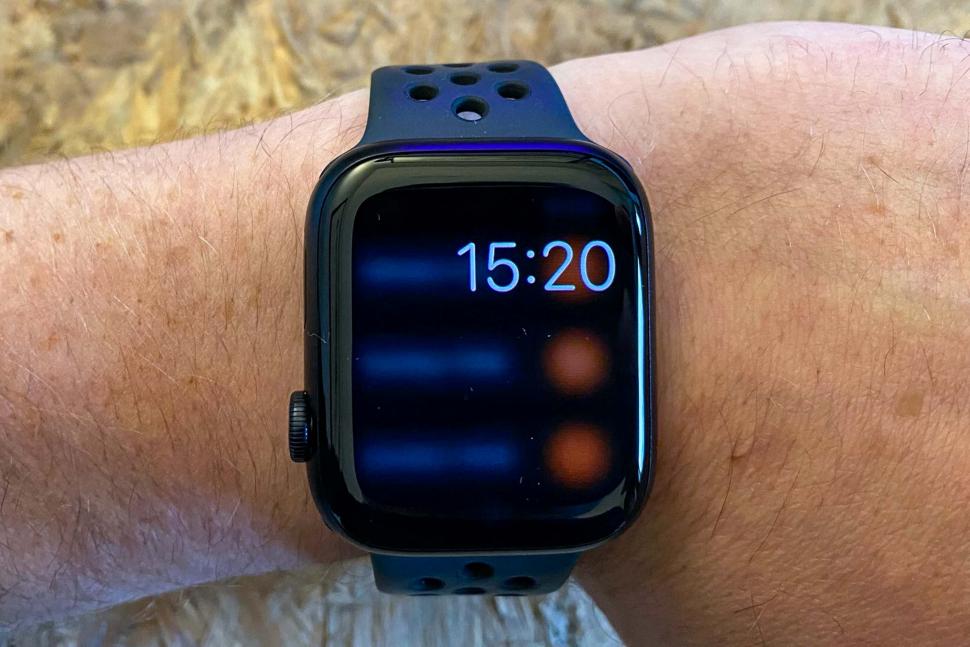
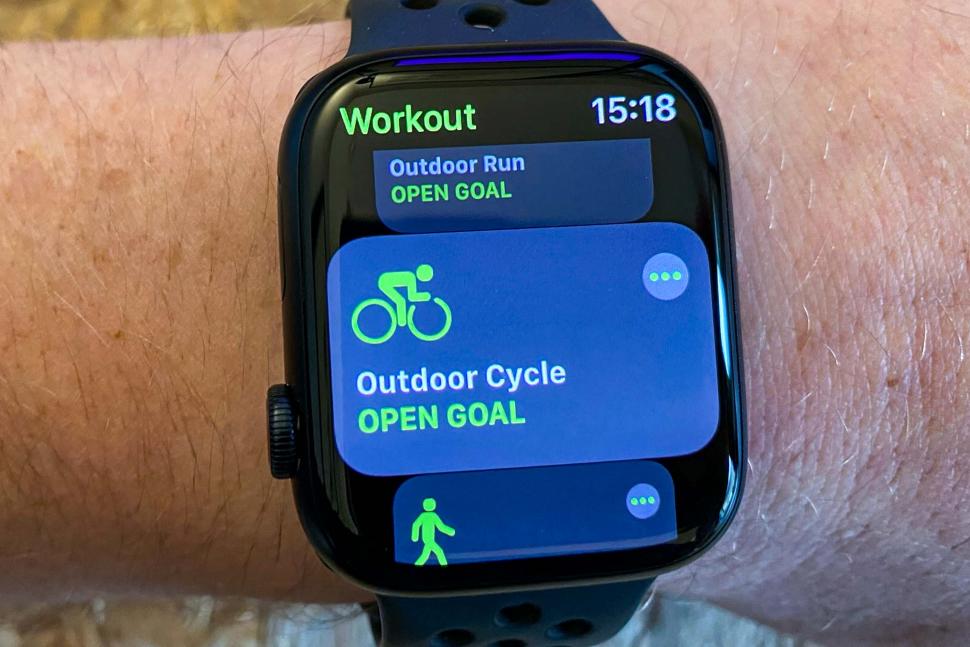
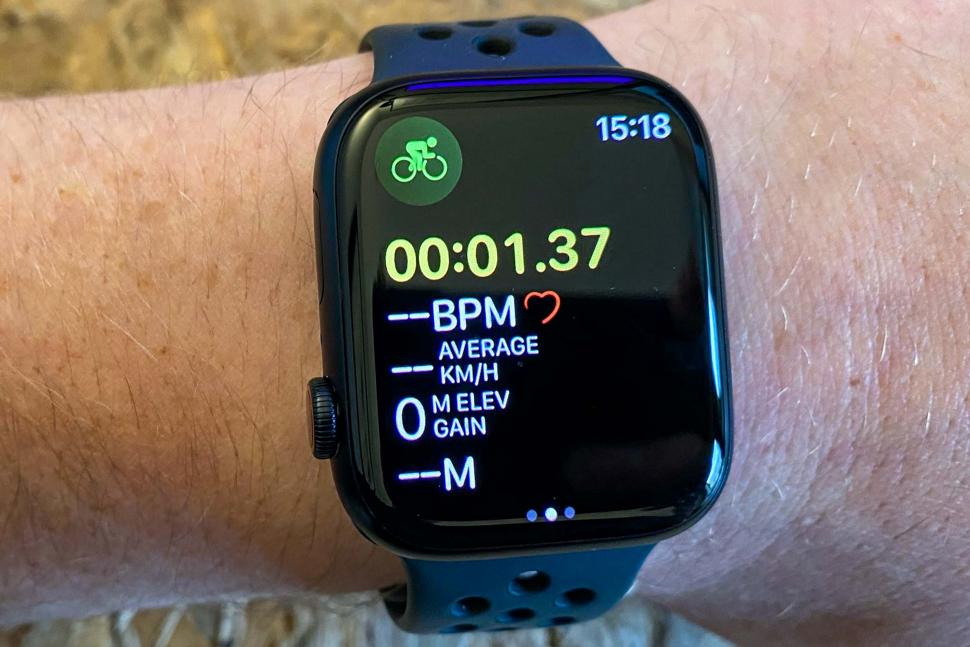
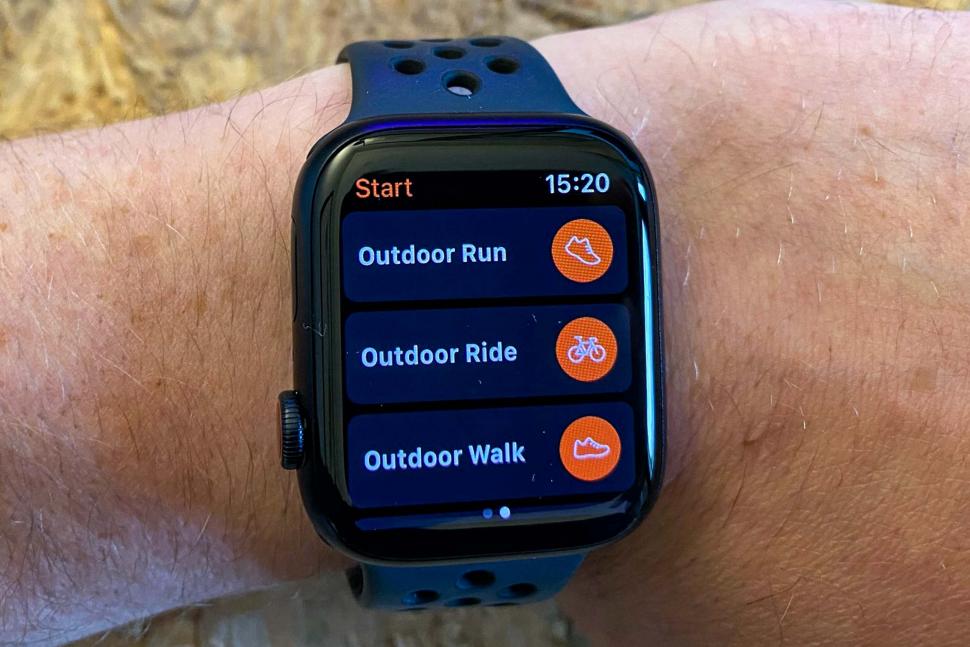
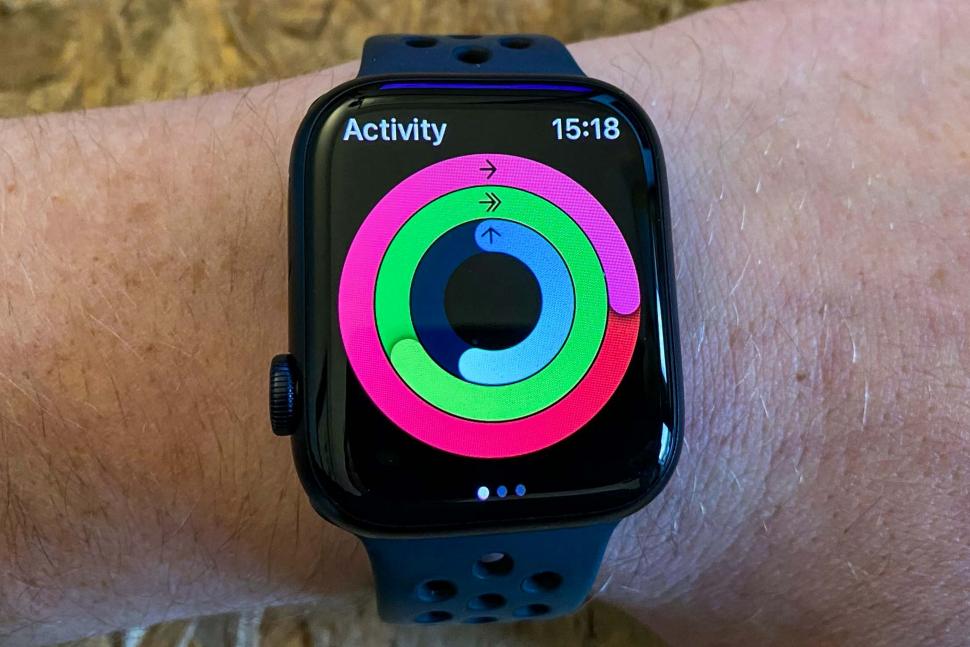
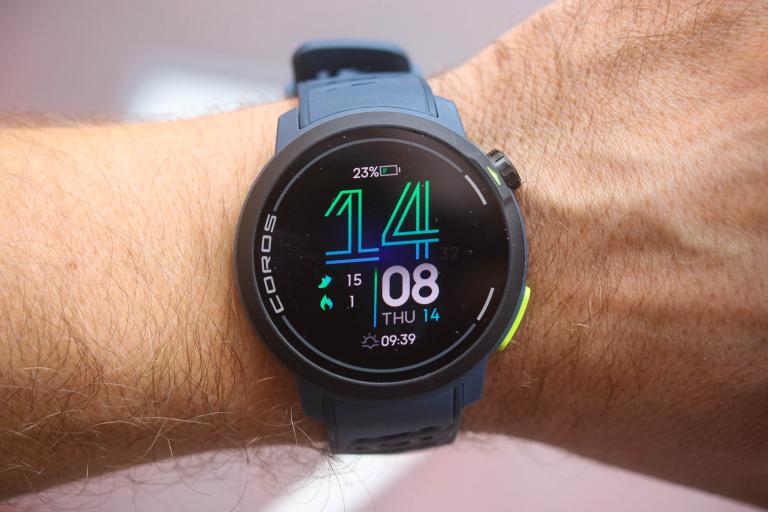
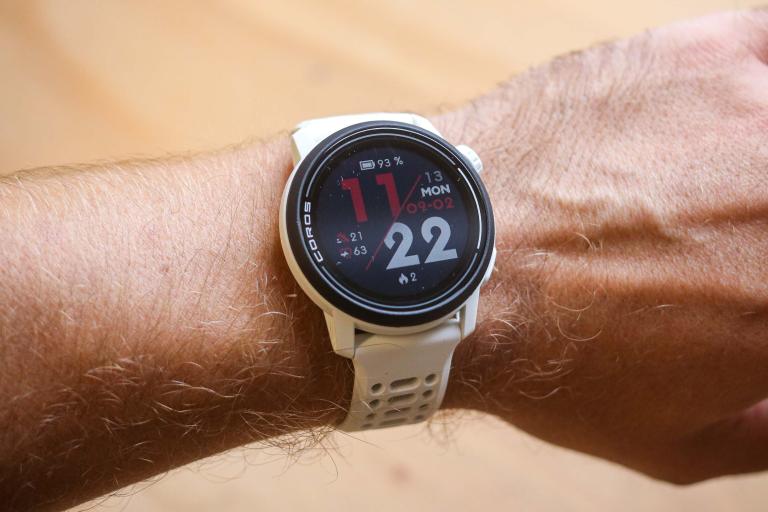
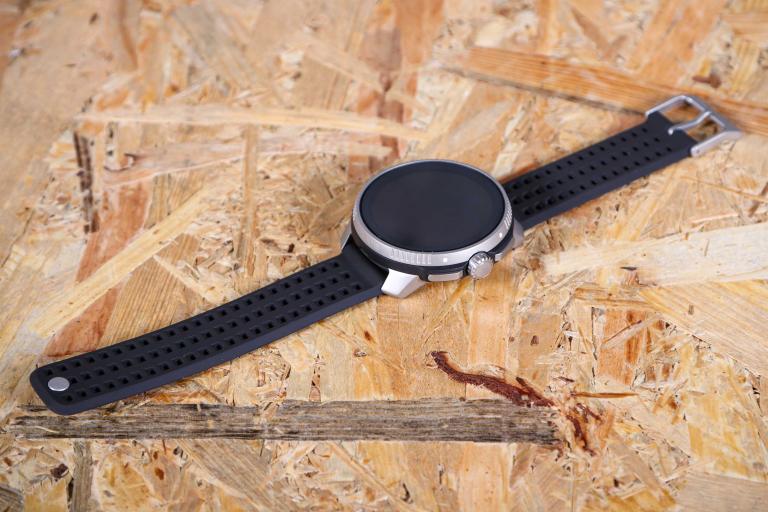
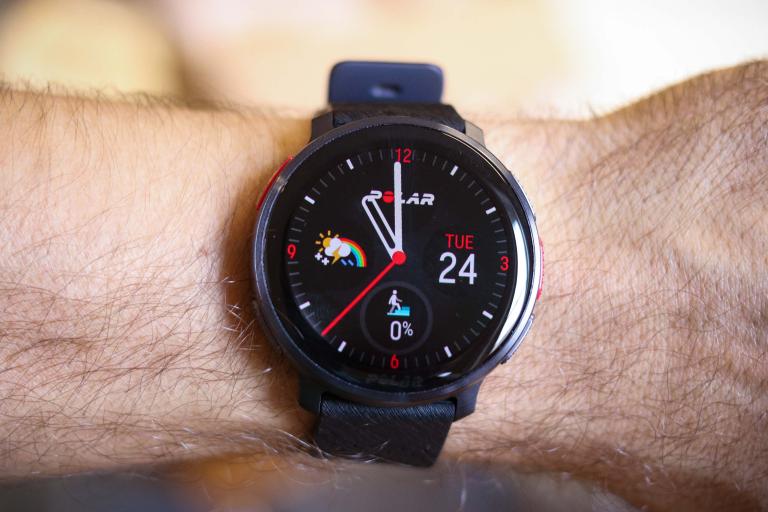
Add new comment
4 comments
"...,.the watch takes about five minutes to automatically pick up that you're riding, but you can make sure it records straight away by selecting the workout app from the app screen, then selecting 'outdoor cycling'. From here you can simply press on the button that starts an open workout to record your ride......
...The watch records a surprisingly good amount of data including heart rate, elevation gain, total calories burned, average speed, and your GPS coordinates..........."
Glaringly omitted is that the Apple IPhone which has all these sensor except the heart rate....seems to crippled from automatically detecting a bike ride....and crippled from having the same fitness workout app to indicate that you've started a bike ride.
This in a lot of ways a redundant product for IPhone owners. But that's not stated plainly here. It should be.
There seems to be no doubt that the best smart watch for optical heart rate recording is the Apple 7- see The Quantified Scientist on YouTube and Instagram. However, it's no good for those of us on Android. Other watches are varying degrees of poor if you're interested in really accurate HR. I abandoned a watch and went for a proper chest strap because I wanted to catch the peaks
I started using an Apple Watch 6 earlier in the year and it’s been a great bit of kit. Rock solid sensors and recording. The only downside is I’m a bit of a horologist and it’s detracting from my ‘real’ watch wearing!
Apart from the occassional glance at average speed, distance and heart rate, I don't use metrics much during my ride. So I've found myself using the apple watch pretty much exclusively for logging rides to strava as it's just so convenient.
I prefer the apple watch app to the strava app as it seems to use less battery and works better with siri for 'start outdoor cycle'.
But all this seemless integration would be impossible without a 3rd party app 'HealthFit', which does all the background syncing between the various platforms and provides some great visual statistics too.
https://apps.apple.com/us/app/healthfit/id1202650514